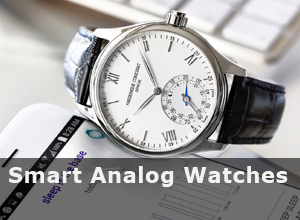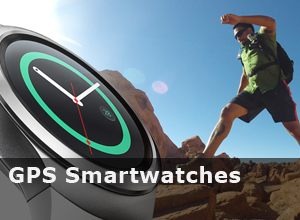Our guide of the best smart glasses features the top brands and their offerings of the world’s most advanced eyewear..
Smart Glasses have been slow out of the blocks compared to other wearable tech genres. Nevertheless, connected eyewear – augmented reality, 360 camera and videos glasses, and fitness tracking glasses are going to be a part of future apparel, especially in sunny countries.
The Best Smart Glasses – Augmented Reality
Garmin Varia Vision

Garmin stepped into the mixed reality domain with their Varia Vision HUD for cyclists. The ANT+ compatible HUD works with your regular sunglasses and can be fixed to either the left or right side.
The headset can display up to 4 data fields, including speed, power output, and heart rate. It also provides information about your workout zones, laps and navigation data – street names, distance to turns, and directions; all displayed right in front of your eye.
Learn more about Garmin Varia Vision
Recon Jet

Owned by Intel, Recon Jet are rammed with cutting-edge technology and also have the look of a pretty cool pair of shades. Their polarized lenses offer full UV protection and are interchangeable.
Recon Jet are mainly designed for cyclists, but they can come in handy for other activities as well. The augmented reality display sits just below the right eye. On board is a built-in GPS and a ton of sensors to keep track of your performance, such as speed, pace, distance, elevation, routes and more.
Kopin Solos

The Kopin Corporation are a leading developer and provider of head-worn wearables to the military, as well as the industrial and consumer market. Like the Recon Jet, these smart glasses are also designed with cycling in mind.
The Kopin Solos come with interchangeable, polarized lenses. They are ANT+ compatible so if you own other ANT+ devices the Solos HUD can display your metrics, such as, heart rate, speed, distance, cadence, power output, calories burned and more.
Learn more about the Kopin Solos
Dispelix

Finland-based Dispelix believe their cutting-edge optical display could be “the” technology to bring smart glasses into the mainstream wardrobe.
Three fundamental requirements that AR glasses need to meet are: Discrete aesthetics that don’t stand out too much from regular glasses. Clear and bright images with a high level of detail. The ability to manufacture on a large scale. Dispelix are aiming to deliver on all three fronts.
Vuzix Blade 3000 Series

After trying out the Vuzix M100 and being unimpressed, we are skipping the M300 and moving straight onto the Blade 3000 Series. We will have to wait until CES in January to see what they’re capable of, so far we get the picture that they’re superior to the M series.
The Blade 3000 are smart sunglasses, which makes sense to me as I only wear glasses in the Sun. They feature a full-color monocular AR display which is being touted as bright and impressive. They are Wi-Fi enabled, which means standalone connectivity as well as Bluetooth. They have a built-in GPS and will display all your digital media in the HUD, such as notifications, directions, maps, weather forecasts, restaurant menus, and more.
Learn more about the Vuzix Blade 3000 Series
ODG R-7

CES 2015 saw the Osterhout Design Group (ODG) introduce a new Smart Glasses platform built for the consumer market. I’m not too sure what happened to those plans as now it seems Enterprise customers are the target, again.
The ODG R-7 a made in the style of Aviator sunglasses. They have a high-end spec sheet, including Wi-Fi, autofocus 1080p camera, 2 digital mics, Dual 720p Stereoscopic AR displays, and more sensors than the MI6 headquarters.
Epson Moverio BT-300

We tried out the Epson Moverio BT-300 at WTS 2016. In terms of looks, I can’t imagine any teenagers wearing them to a Justin Bieber concert..
I don’t think Epson have worked out exactly which market their smart glasses will cater for, like the Recon Jet and Kopin Solos cater for cyclists. As the BT-300 run on Android 5.1 and offer Wi-Fi, a 5MP camera and augmented reality; they’re capable of providing a powerful wearable computing solution.
`When it comes to the quality of the AR display, the BT-300 are big step from any other smart glasses I’ve tried. They use a 720p OLED for each eye and the images are crisp and bright. For everyday use though – stuff like getting directions and seeing notifications; I think a monocular display makes more sense than binocular
Learn more about the Epson Moverio BT-300





































Leave A Comment